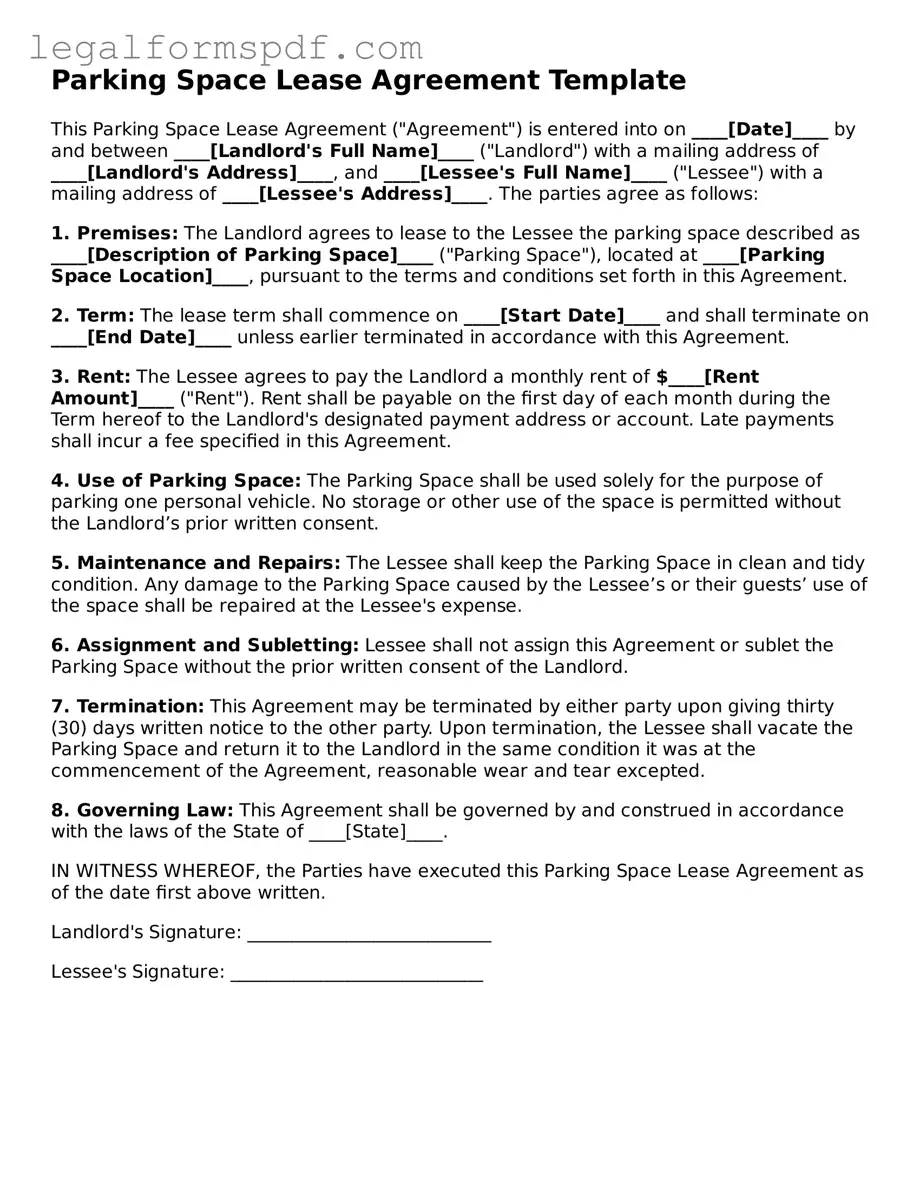What is a Parking Space Lease Agreement?
A Parking Space Lease Agreement is a document that outlines the terms and conditions under which a parking space owner agrees to rent out the parking space to a lessee. It typically includes details such as payment amount, payment schedule, duration of the lease, and any restrictions or responsibilities of each party.
Who needs a Parking Space Lease Agreement?
This agreement is essential for both property owners and individuals or businesses looking to secure a parking spot on a temporary or long-term basis. It provides a legal framework that protects the rights of both the lessor (parking space owner) and the lessee (individual or entity renting the parking space).
What should be included in a Parking Space Lease Agreement?
A comprehensive agreement should include the location of the parking space, rental amount, payment frequency, lease term, deposit amount, use restrictions, terms of termination, and any other conditions both parties wish to include.
How can I terminate a Parking Space Lease Agreement?
Termination clauses vary by agreement but typically include a notice period requirement and procedures for either party to terminate the lease early. Always review the termination clause carefully to understand the conditions under which the agreement can be ended.
Is a written Parking Space Lease Agreement legally required?
While oral agreements can be legally binding, a written lease provides a clear record of the terms agreed upon and helps prevent misunderstandings. It is strongly advised to have a written agreement in place.
How do I handle disputes regarding a Parking Space Lease Agreement?
It's best to first attempt resolving disputes through direct communication. If that fails, the dispute resolution clause in your agreement might recommend mediation or arbitration. In cases where an amicable resolution cannot be achieved, consulting a legal professional may be necessary.
Can I rent out my leased parking space to someone else?
Subleasing may be permissible if the original Parking Space Lease Agreement explicitly states so. Otherwise, the lessor typically must approve any subleasing arrangements. Always check your agreement for clauses related to subleasing.
What happens if a lessee violates the terms of the agreement?
The agreement should outline specific remedies for breaches, ranging from fines to termination of the lease. The severity of the violation usually dictates the course of action, guided by the stipulated terms of the agreement.
Do I need a lawyer to draft a Parking Space Lease Agreement?
While it's possible to create an agreement on your own, especially with the help of templates, consulting a lawyer ensures that all legal aspects are properly addressed and tailored to your specific needs and legal requirements of your jurisdiction.
